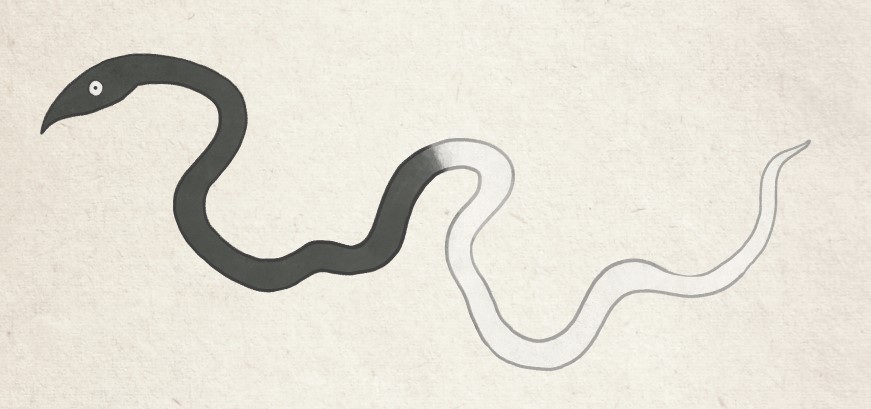If you’d like to join me and many others in painting a yokai a day this month, all you have to do is paint, draw, or create any yokai you like, and share it using the hashtag #ayokaiaday. There’s no set list of yokai you have to paint, but you’re free to browse yokai.com or any other yokai resource and choose your favorites.

Kasamushi
笠虫
Translation: capped worm
Harikikigaki describes kasamushi as a red worm who lives in either the heart or the small intestine. Its primary symptom is a very high fever. It prefers very bland food, low in salt and miso flavoring. Kasamushi infections are treated with dried ginger root and pepper.
I have to admit that this worm has me stumped. First of all, its name is kasamushi, but it doesn’t have a kasa. We’ve seen a number of worms with conical hat-like objects on their heads, including the hizo no kasamushi on yokai.com. So why doesn’t this guy have a cap? Or why did they call him kasamushi at all? He’s a very plain looking worm with no outstanding features at all.
Then, it says it lives in the heart or the small intestine. Ok… but there’s quite a bit of difference between those two organs… why not the heart and the lungs? Or the small and the large intestine? It’s a weird pair of organs to infect, but I suspect there’s something in Chinese medicine that I don’t know about which explains the connection.
As for it’s food preferences, presumably it imparts these preference to its host as well, as many yokai worms do. That may be the reason that ginger root and pepper are effective. Those both have pretty strong spicy flavor to them, and a worm that only likes bland food would probably be driven off by highly spicy foods.
I wish there was more about this worm in the book. It’s so vague, and leaves me with questions. Like where is its kasa??? Oh well, as I always say: the appeal of yokai is in the mystery.
If you enjoyed today’s A-Yokai-A-Day entry, please consider becoming a patron and supporting my work by visiting patreon.com/osarusan.






